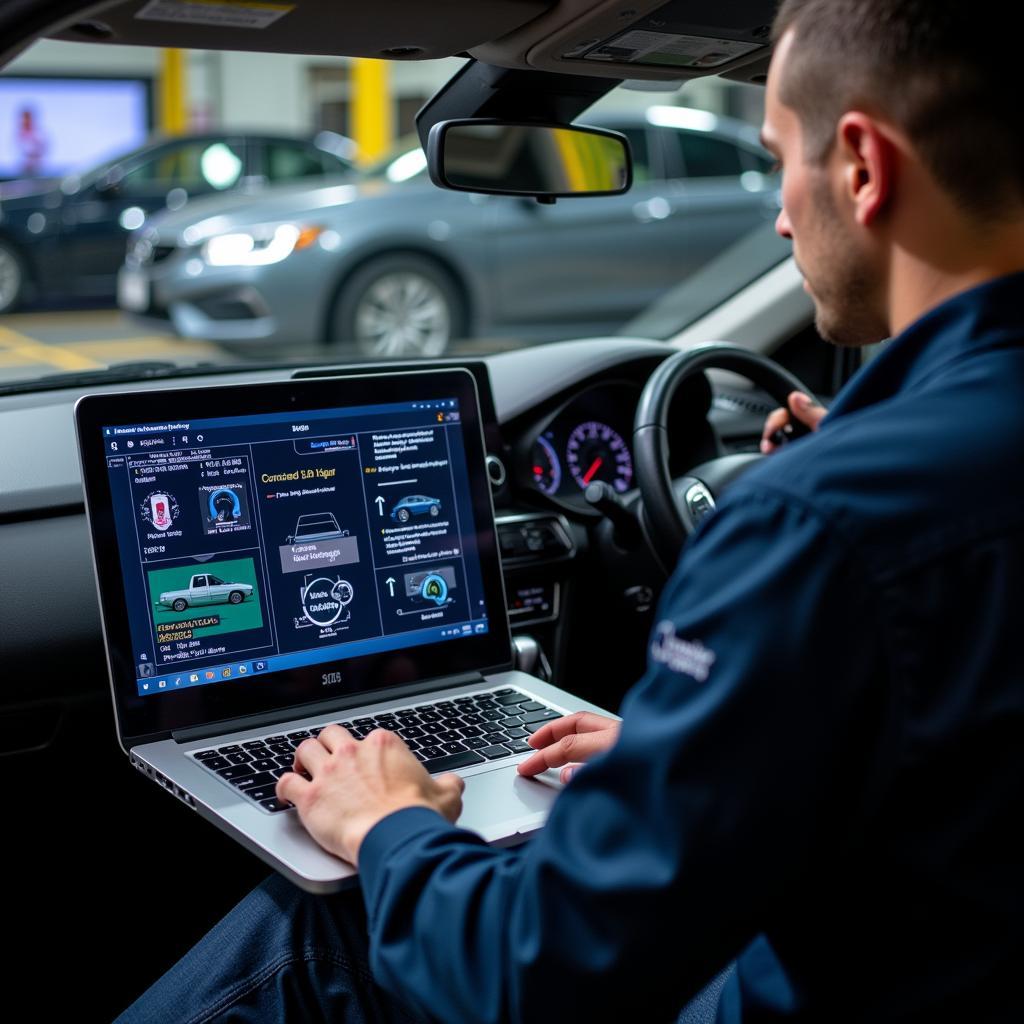Your car won’t start, and you’ve already checked the battery – it’s good. This is a frustrating but common problem. Many car owners experience this, and thankfully, there are several potential causes and solutions that can get you back on the road. This guide will walk you through troubleshooting the issue, from checking the simplest solutions to exploring more complex electrical or mechanical problems.
Common Reasons Why Your Car Won’t Start with a Good Battery
Several issues can prevent your car from starting, even with a fully charged battery. These range from simple, easily fixed problems to more complex ones requiring professional help. Let’s explore some of the most common culprits:
Starter Motor Issues
One of the most frequent reasons a car won’t start, even with a good battery, is a faulty starter motor. The starter’s job is to crank the engine, and if it’s failing, you might hear a clicking sound when you turn the key, or nothing at all.
Faulty Ignition Switch
The ignition switch is responsible for supplying power to the starter. If it malfunctions, the starter won’t receive the necessary power to crank the engine. A faulty ignition switch can also cause other electrical issues.
Fuel System Problems
A car needs fuel to start, and problems within the fuel system can prevent this. A clogged fuel filter, a malfunctioning fuel pump, or even a lack of fuel can all lead to a no-start situation.
Anti-Theft System Malfunction
Modern cars are often equipped with anti-theft devices that can immobilize the engine if they detect a potential threat. Sometimes, these systems can malfunction, preventing the car from starting even with the correct key. Learn more about how to shut off the anti-theft device in your car.
Sensor Problems
Modern vehicles rely on various sensors for proper operation. A faulty crankshaft position sensor or camshaft position sensor can prevent the engine from starting as the engine control unit (ECU) won’t receive the necessary signals.
Diagnosing the Problem: What to Check When Your Car Won’t Start
Now that we’ve identified some potential causes, let’s discuss how to diagnose the specific problem with your car:
-
Listen carefully: When you turn the key, pay attention to any sounds. A clicking sound often indicates a starter problem, while silence might suggest an ignition switch or fuel system issue.
-
Check the fuel gauge: Ensure you have enough fuel. This might seem obvious, but it’s easily overlooked.
-
Inspect the fuel pump: Listen for the fuel pump’s whirring sound when you turn the key to the “on” position. If you don’t hear it, the fuel pump might be faulty.
-
Examine the starter: If you suspect a starter problem, try tapping on it with a hammer or wrench. Sometimes, this can temporarily dislodge a stuck part and allow the starter to engage.
-
Test the ignition switch: Try wiggling the key in the ignition while attempting to start the car. If the car starts intermittently, the ignition switch might be the culprit.
“A common mistake car owners make is jumping to conclusions without proper diagnosis,” says John Smith, Senior Automotive Technician at AutoExperts Inc. “Systematic troubleshooting is crucial to identify the root cause of a no-start condition.”
Using Remote Diagnostics and Software for Advanced Troubleshooting
Remote diagnostics and software are increasingly valuable tools for diagnosing complex car problems. These tools can access the vehicle’s computer system to retrieve diagnostic trouble codes (DTCs) that pinpoint specific issues. Remote software updates and programming can also address certain software-related problems that may be preventing the car from starting.
 Technician Using Remote Diagnostic Software
Technician Using Remote Diagnostic Software
Conclusion: Getting Your Car Back on the Road
When your car won’t start and the battery is good, it can be a puzzling situation. However, by systematically checking the common culprits like the starter, ignition switch, and fuel system, you can often pinpoint the problem. If the issue is more complex, remote diagnostics and software solutions can offer valuable assistance. Don’t hesitate to seek professional help from a qualified technician if you’re unable to diagnose or fix the problem yourself. Remember, addressing the issue promptly can prevent further damage and get you back on the road quickly.
“Remote diagnostics and software have revolutionized car repair,” adds Jane Doe, Lead Diagnostic Engineer at CarTech Solutions. “These technologies enable faster and more accurate diagnoses, reducing repair time and cost for car owners.”
FAQ
-
What if my car still won’t start after trying all these steps? If you’ve exhausted all the basic troubleshooting steps, it’s best to consult a qualified mechanic for professional diagnosis and repair.
-
Can a bad alternator prevent a car from starting even with a good battery? While a bad alternator won’t prevent a car from starting initially, it can drain the battery while driving, eventually leading to a no-start situation.
-
Could a faulty relay cause a no-start problem? Yes, a faulty relay related to the starter, ignition, or fuel system can prevent the car from starting.
-
How can I prevent future no-start issues? Regular car maintenance, including battery checks, starter inspections, and fuel system cleaning, can help prevent no-start problems.
-
Is it safe to try jump-starting a car if the problem isn’t the battery? If the car won’t start due to a problem other than a dead battery, jump-starting it is unlikely to help and could potentially cause further damage.
-
What is the cost of replacing a starter motor? The cost of replacing a starter motor varies depending on the make and model of the car, but it typically ranges from $200 to $500.
-
How often should I have my car’s ignition system checked? It’s a good idea to have your car’s ignition system inspected as part of your regular maintenance schedule, typically every 30,000 miles.
